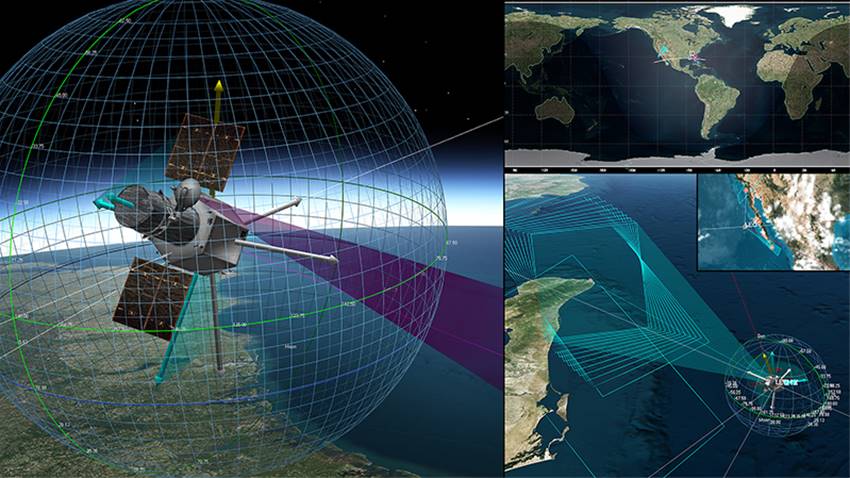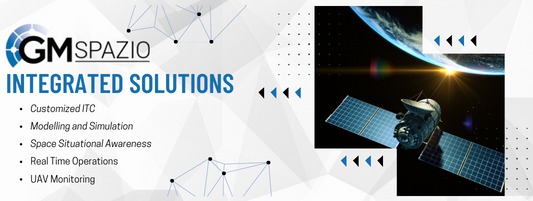
As space becomes ever more critical for both civilian and military operations, the risks posed by space debris and hostile actions are growing rapidly. Recent discussions underline the mounting challenge of space debris, but that’s only part of the picture. Beyond physical threats, satellites today are increasingly vulnerable to cyberattacks, electronic interference, and espionage. This makes Space Situational Awareness (SSA) and Space Surveillance and Tracking (SST) not just important but indispensable for safeguarding assets in orbit.
The Dual Threat of Space Debris and Hostile Actions
Space debris continues to be a persistent threat, with tens of thousands of trackable objects—including defunct satellites, rocket parts, and mission-related debris—crowding Earth's orbits. Collisions with these objects can render critical satellites inoperable, disrupting everything from communications to GPS systems. However, satellites are also at risk from active interference by adversaries.
Today, military and civilian satellites alike are exposed to electronic attacks, including:
- Spoofing and Jamming: These attacks can manipulate or block satellite signals, compromising navigation systems, communications, and data collection. For instance, jamming can render a GPS satellite temporarily useless, while spoofing can send false signals, misleading both civilian and military operations on Earth.
- Cyberattacks: Satellites are also vulnerable to cyber intrusions. Hackers could take control of satellite operations, disable systems, or even alter trajectories. A successful cyberattack on a satellite could jeopardize national security, disrupt financial systems, and impair global communications.
- Espionage: Military satellites, in particular, are targets for adversaries looking to gather sensitive information. The ability to intercept satellite communications or observe military movements via reconnaissance satellites presents significant strategic risks.
Given these multifaceted threats, effective SSA and SST systems are essential not only to prevent physical collisions with debris but also to detect and counteract hostile activities in space.
Space Situational Awareness (SSA): A Defense Imperative
SSA involves the detection, tracking, and monitoring of all objects in space, providing operators with real-time awareness of what’s happening around their assets. In today's complex geopolitical environment, SSA extends beyond merely avoiding debris—it’s about ensuring satellites remain secure from adversarial actions.
For civilian satellites, SSA enables:
- Collision Avoidance: Preventing damage from space debris or operational satellites, ensuring mission continuity for communications, Earth observation, or research.
- Cybersecurity: Tracking potential threats to satellite systems from cyber intrusions, which are becoming more common as satellite infrastructure grows in importance.
For military applications, SSA takes on even greater significance:
- Threat Detection: SSA systems help detect potential threats from adversaries, such as missile launches targeting satellites or electronic warfare tactics like jamming or spoofing.
- Intelligence Protection: Given the increasing use of satellites for intelligence, reconnaissance, and communication, SSA ensures that nations can safeguard their space assets from espionage and malicious actions.
Space Surveillance and Tracking (SST): The Technology that Powers SSA
SST is the core technology that enables comprehensive SSA. It involves the constant monitoring of objects in orbit, using ground-based radars, telescopes, and satellite networks to gather precise data on the location and movement of debris, satellites, and potential threats.
For the military, SST systems are invaluable for protecting critical infrastructure from both physical collisions and electronic attacks. By constantly tracking objects and monitoring unusual behavior—such as changes in a satellite's orbit or suspicious signal patterns—SST helps predict and counter attacks before they can cause significant damage.
In the civilian sphere, SST provides the data necessary to keep global communication networks, navigation systems, and scientific missions safe from potential collisions or interference. It enables operators to take preemptive action, protecting not just their satellites but the vital services they provide on Earth.
Orbit Guard: A Comprehensive Solution to Space Debris and Security Threats
Given the rising risks, tools like Orbit Guard, developed by GMSPAZIO, are becoming essential for managing and securing satellites. Orbit Guard offers a full spectrum solution, integrating both SSA and SST capabilities to protect against both physical and electronic threats.
- Real-Time Monitoring: Orbit Guard continuously tracks satellites, debris, and other objects in orbit, allowing operators to receive up-to-date information on potential collision risks or unusual activities, such as hostile maneuvers or jamming attempts.
- Advanced Threat Detection: Orbit Guard’s sophisticated algorithms not only predict potential collisions but also alert users to electronic attacks, such as jamming or spoofing, enabling operators to take preventive action before serious damage occurs.
- Cyber Defense: The tool’s security features are designed to detect and neutralize cyber intrusions that could compromise satellite control or data integrity, ensuring that satellites remain operational and secure from hacking attempts.
- Dual-Use Application: Orbit Guard is equipped to serve both civilian space operators and military stakeholders, offering critical protections for national security and global communication infrastructures alike.
Navigating a Complex Space Environment
As the space domain becomes increasingly contested, with more actors and greater strategic interest, the need for robust SSA and SST capabilities cannot be overstated. The integration of space defense technologies like Orbit Guard allows both military and civilian organizations to proactively manage the complex and evolving threats in orbit—whether they come in the form of space debris, electronic warfare, or cyberattacks.
Orbit Guard also integrates STK (Systems Tool Kit), a digital mission engineering tool developed by Ansys, to enhance its capabilities. STK provides a physics-based modeling environment to simulate and analyze the performance of satellites in real-time scenarios. By incorporating data from ground stations, space-based sensors, and mission objectives, STK allows Orbit Guard to offer highly accurate and dynamic simulations of potential threats. It also supports communication and radar analyses, ensuring robust protection against jamming and signal interference.
STK's multi-domain simulations allow for detailed modeling of satellite constellations, their interactions with space environments, and the impact of various external factors such as space weather. Its ability to provide 3D visualizations of operational environments makes it indispensable for both military and civilian applications in space
In conclusion, Space Situational Awareness and Space Surveillance and Tracking represent the bedrock of modern space defense strategies. Without these systems, the space environment would become not just hazardous but strategically vulnerable. Tools like Orbit Guard are pivotal in ensuring that humanity can continue to use space safely and effectively, both now and in the future.





